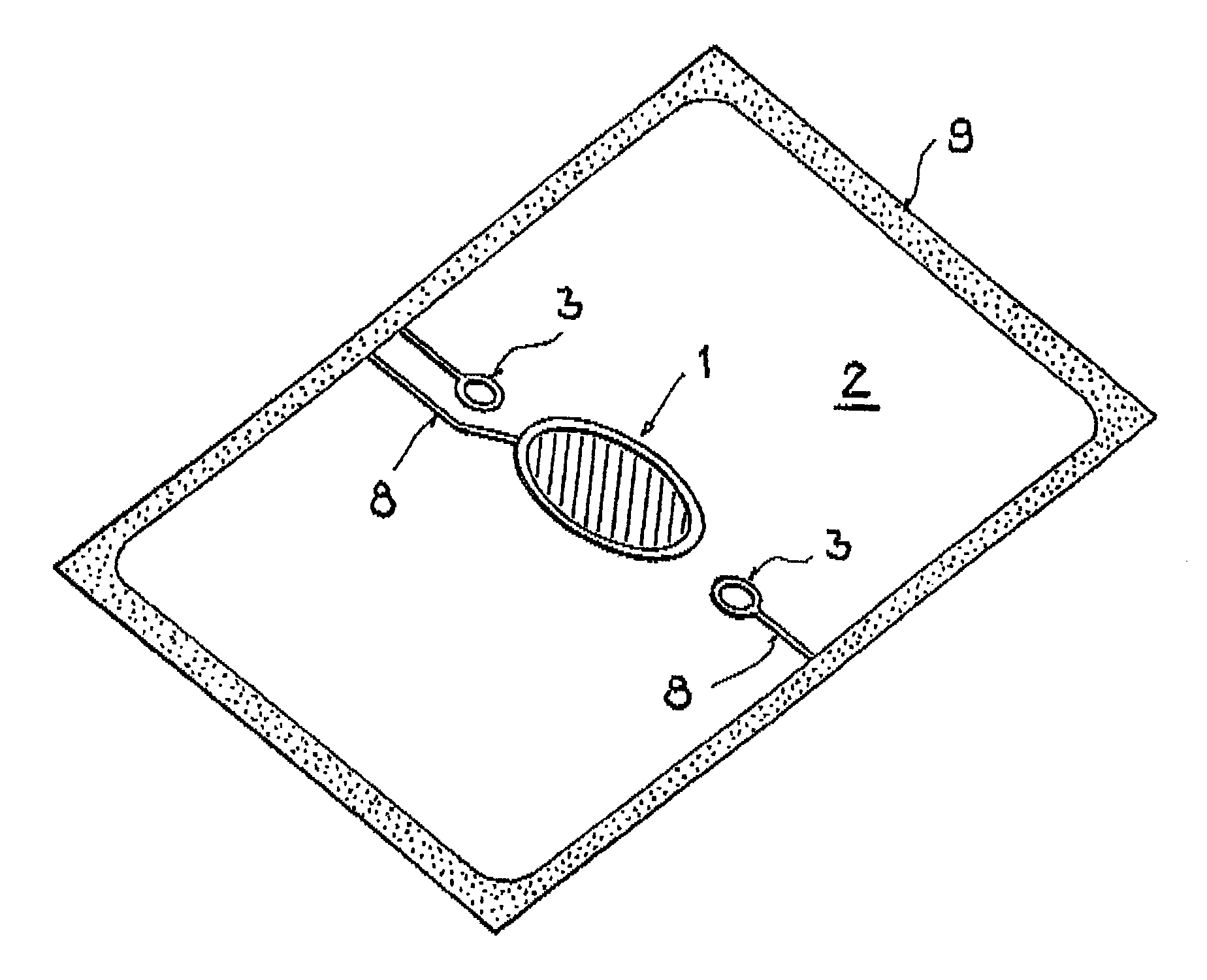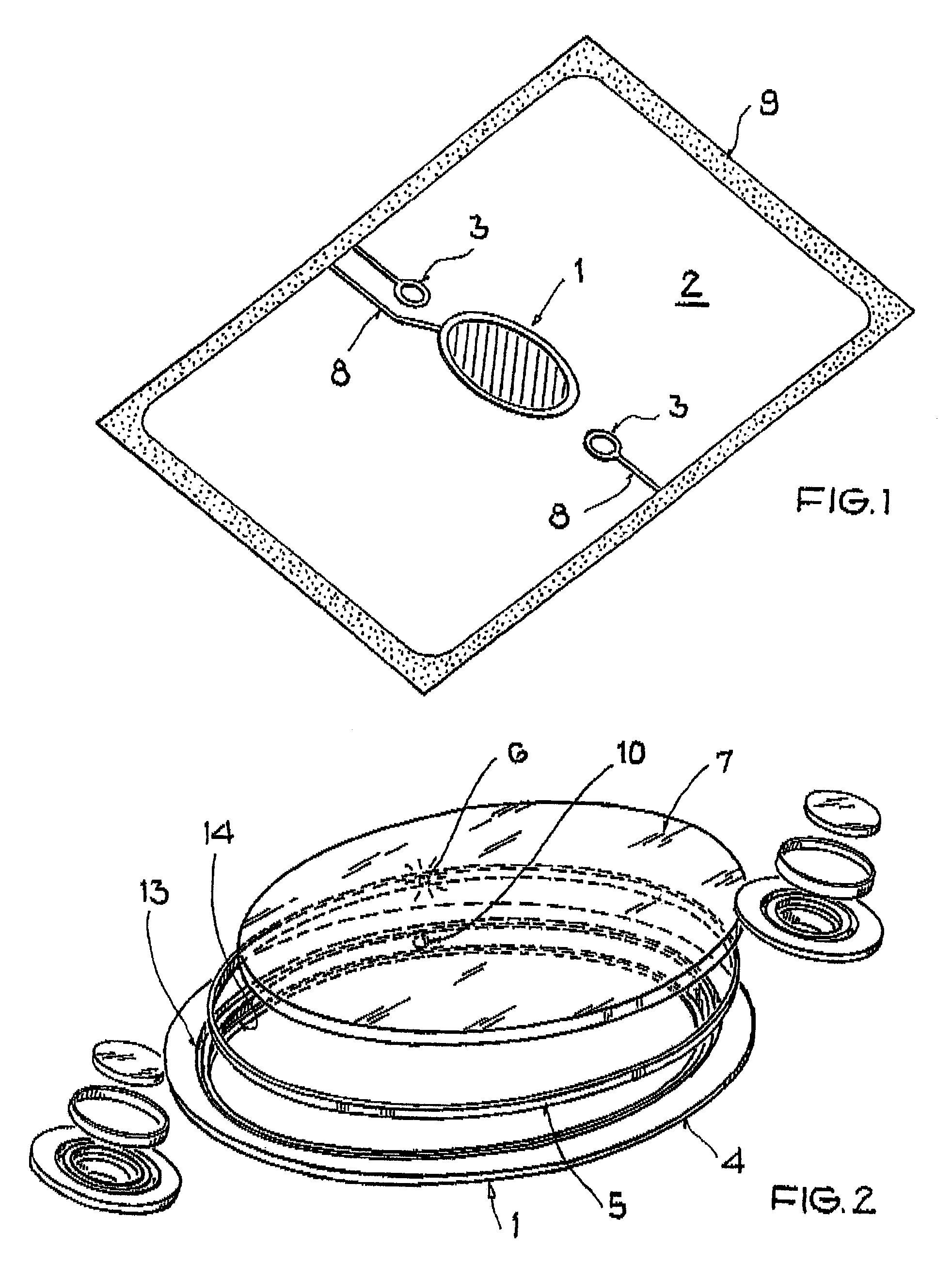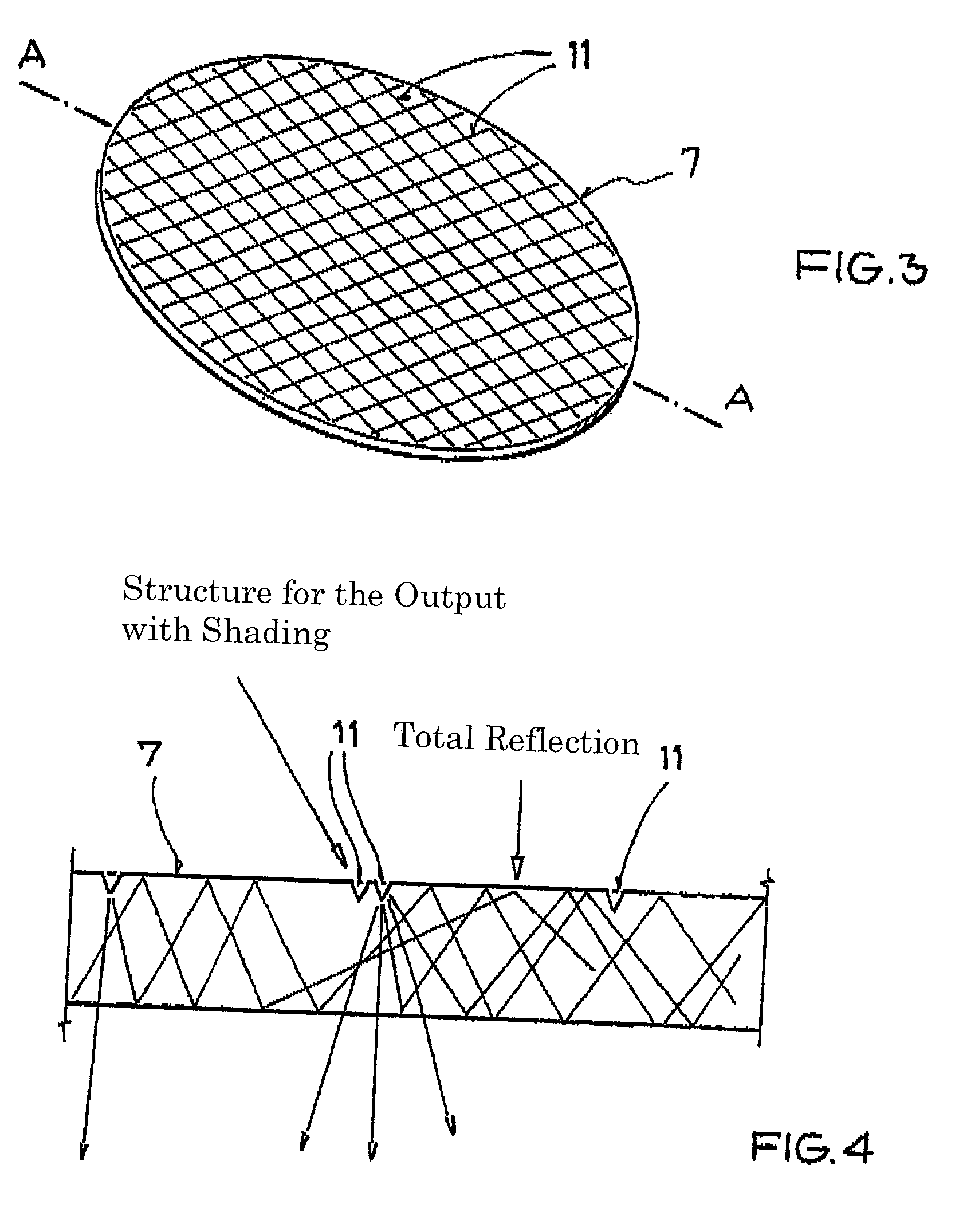Light for the passenger compartment of a motor vehicle
a passenger compartment and passenger lamp technology, applied in the field of interior lamps, can solve the problems of occupying occupying less suitable positions for interior lamps, and occupying less space for interior lamps, so as to save space for interior lamps
- Summary
- Abstract
- Description
- Claims
- Application Information
AI Technical Summary
Benefits of technology
Problems solved by technology
Method used
Image
Examples
Embodiment Construction
[0012]FIG. 1 is a schematic representation of an interior lamp in the glass roof 2 of a motor vehicle. The interior lamp, with one central light 1 and two “down” lights 3, is arranged in recesses in the glass of the glass roof 2. The interior lamp 1, 3 has a housing 4, which has a ring-shaped printed-circuit board 5 with light-emitting diodes 6 and the pertaining electronic system. The lamp also has a ring-shaped receiving slot for the printed-circuit board 5 in the housing 4 and an output element 7, which is arranged inside the housing 4 and preferably corresponds to a glass pane. The supply and control of the printed-circuit board 5 takes place by way of leads 8, which are integrated in the glass, preferably a laminated glass, of the glass roof 2, similar to a heatable rear window pane. The leads 8 extend from the glass frame 9 to the housing 4 into which the printed-circuit board 5 and the output element 7 are inserted.
[0013]As illustrated in FIG. 2, the light-emitting diodes 6 a...
PUM
 Login to View More
Login to View More Abstract
Description
Claims
Application Information
 Login to View More
Login to View More - R&D
- Intellectual Property
- Life Sciences
- Materials
- Tech Scout
- Unparalleled Data Quality
- Higher Quality Content
- 60% Fewer Hallucinations
Browse by: Latest US Patents, China's latest patents, Technical Efficacy Thesaurus, Application Domain, Technology Topic, Popular Technical Reports.
© 2025 PatSnap. All rights reserved.Legal|Privacy policy|Modern Slavery Act Transparency Statement|Sitemap|About US| Contact US: help@patsnap.com



